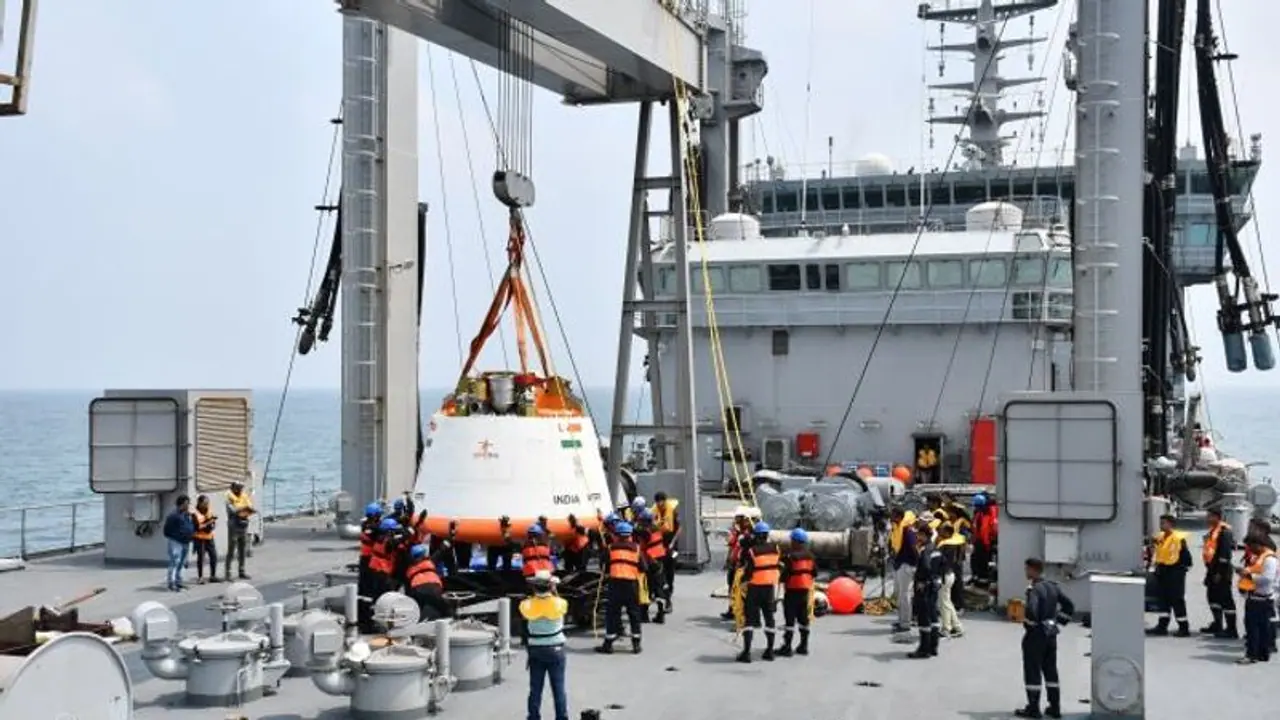ISRO (Indian Space Research Organisation) achieved a significant milestone with the successful test flight of its Gaganyaan mission, which aims to send humans into space. The test flight, known as the Flight Test Vehicle Abort Mission-1 (TV-D1), featured a one-stage vehicle with the Crew Escape System (CES).
The Indian Space Research Organisation (ISRO) achieved a major milestone with the successful test flight of its ambitious Gaganyaan mission, which is geared towards launching humans into space. The test module was launched at 10 am after addressing an anomaly detected by the onboard computer earlier in the morning. Following the successful test, ISRO Chairman S Somanath said: "There was a monitoring anomaly that cause a delay in the launch. Then it took time to refill the gases. Following this, the Automatic Launch System was carried out and the ground computer cleared the launch. I am happy that our team could identify and resolve the anomaly very fast. We will come back with more information."

This significant event unfolded at the Satish Dhawan Space Centre (SDSC) in Sriharikota, Andhra Pradesh. The inaugural Flight Test Vehicle Abort Mission-1 (TV-D1) serves as a crucial demonstration of the Crew Escape System (CES). The test involved a single-stage vehicle powered by liquid propulsion, named T1-D1. This vehicle was specially equipped with a modified VIKAS engine and featured both the Crew Module (CM) and Crew Escape System (CES) mounted at its forward end.
Operating at an altitude of approximately 17 kilometres, the safety system disengaged from the rocket, initiating a sequence of actions that included parachute deployment. These actions were crucial to ensuring the safe return of the crew capsule to Earth, and the capsule executed a controlled landing in the sea, roughly 10 kilometres off the coast of Sriharikota.
The task of retrieving the TV-D1 Crew Module, which landed approximately 10 kilometres from the Sriharikota coast, was undertaken by the Indian Navy. Specialized recovery ships, positioned at a safe distance in the sea, initiated the approach to the Crew Module. Skilled divers attached a buoy to the module, facilitating its safe lifting by a ship crane for transportation back to the shore.
The primary purpose of this test flight was to evaluate the effectiveness of the crew escape system, a pivotal component of the Gaganyaan mission. This system is expressly designed to ensure the safe return of astronauts in the event of an emergency during the actual crew mission launch, slated for 2025. The success of this test flight holds immense significance, as it demonstrates the crew escape system's capability to bring astronauts safely back to Earth. This achievement marks a critical milestone in the qualification testing process and the uncrewed mission phases, laying the foundation for the first Gaganyaan program mission.
The Gaganyaan mission at its core seeks to transport humans into space, placing them in a Low Earth Orbit at an altitude of approximately 400 kilometers for a three-day mission. This historic journey is scheduled for 2025, and the crew for this mission will be launched into their designated orbit using an LVM3 rocket, incorporating various propulsion systems, including solid, liquid, and cryogenic stages.
Somanath has emphasized the rigorous testing regimen for the Gaganyaan mission, which encompasses over 100 tests, including 20 major tests and three uncrewed HLVM3 missions. All these preparations are in anticipation of the manned mission scheduled for 2025, marking an exciting new chapter in India's space exploration endeavours.
